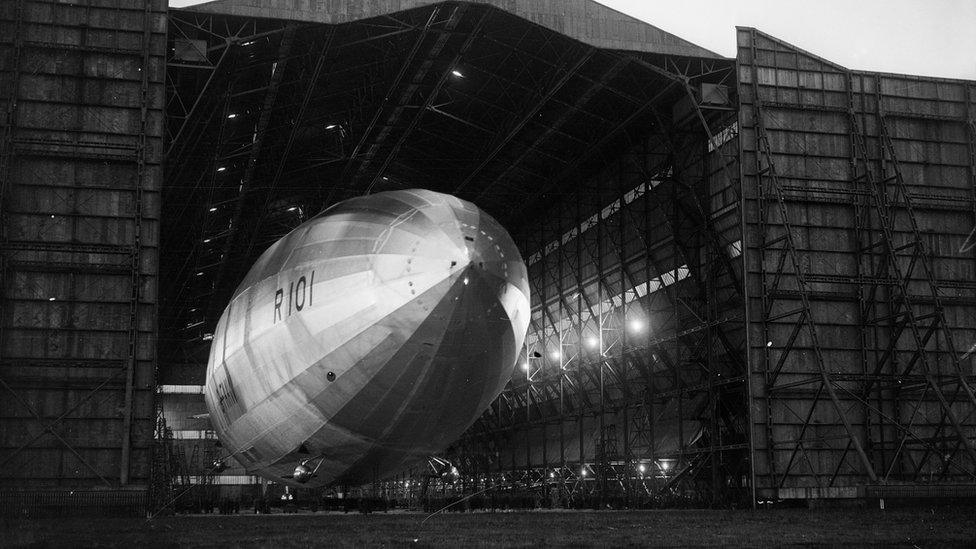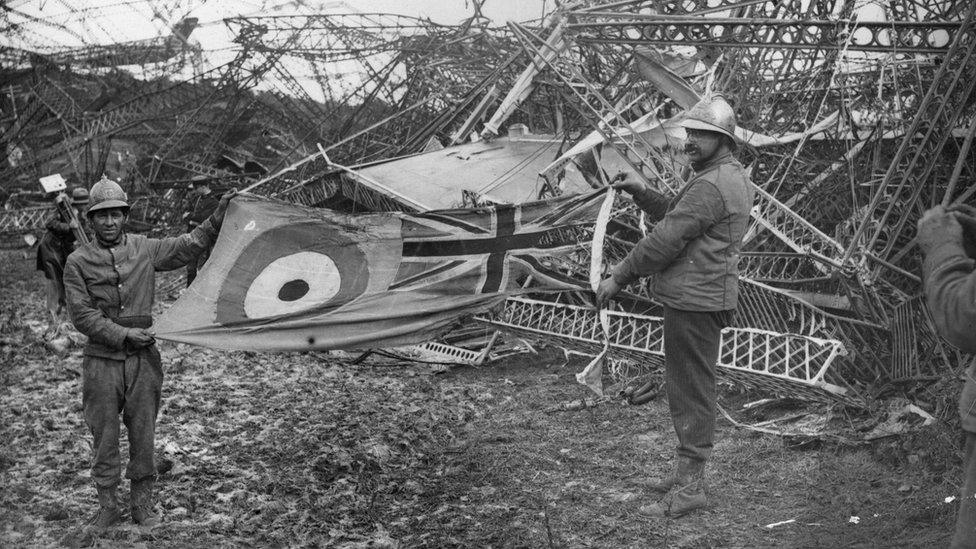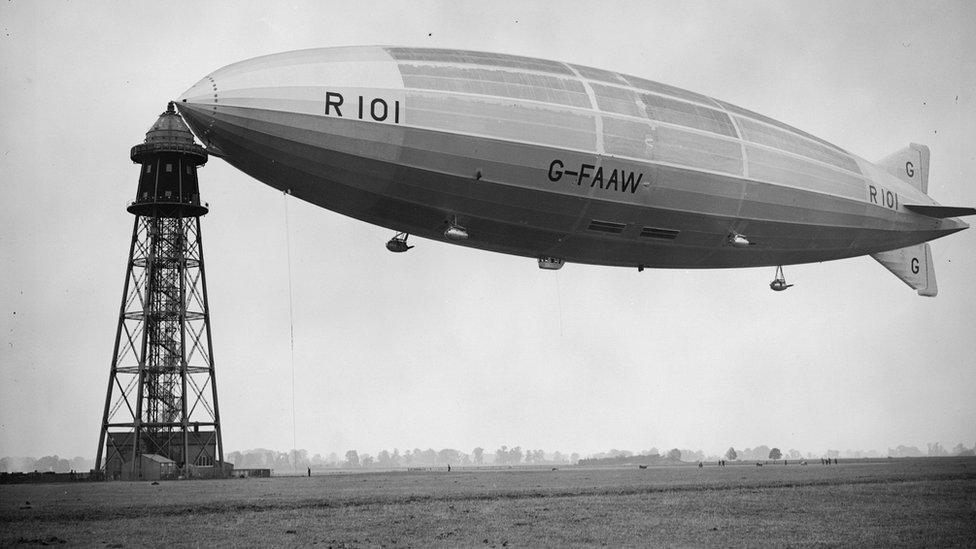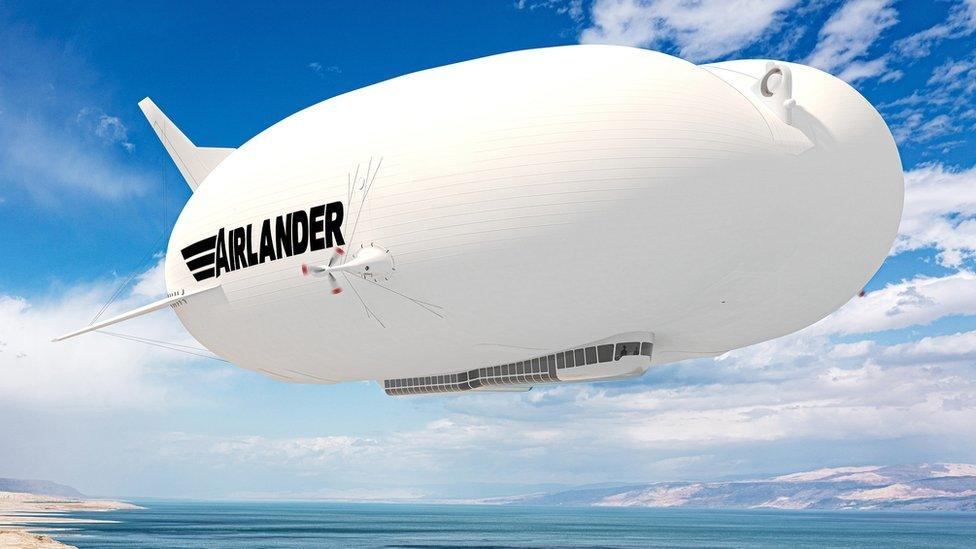R101 airship crash: 'Hope and sadness' on 90th anniversary
- Published

Donald Ralph Clarke and his brother Reginald Clarke by the R101 in 1930
The 90th anniversary of the maiden flight of what was the world's largest airship will be filled with "hope and sadness", an artist commemorating the tragic journey said.
The R101 set off for India on 4 October 1930, from Cardington, near Bedford.
The next day it crashed in France, killing 48 of the 55 people on board.
Airship Dreams, external artists Mike Stubbs said he hoped airships would "return to the skies" with the development of the hybrid aircraft Airlander 10.
The two massive hangars at Cardington still dominate the horizon south-east of Bedford, and they are currently used by the film industry, having been recently used for the development of the Hybrid Air Vehicles, external (HAV) company's Airlander vehicle, which is part-plane, part-airship.

History of airships at Cardington

The R101 unveiled at Hangar 1 at Cardington near Bedford
The first hangar at Cardington was built in 1916
The second hangar was dismantled from Pulham in Norfolk, and re-erected at Cardington in 1928
The R101 was built by Royal Airship Works for passengers and to transport mail
After the crash development stopped and Royal Airship Works closed in 1934, but the site reopened in in 1936 as RAF Cardington
RAF Cardington was used as a centre to train barrage balloon operators
Airship Industries started in the 1970s to develop airships
Hybrid Air Vehicles moved to Cardington in December 2013 to test Airlander 10.
Source: Airship Heritage Trust


Derek Binks (pictured) was three years old when his father worked as an engineer on the R101
Derek Binks' father John H Binks was an engineer on the ship who survived the 1930 crash.
Derek, 94, said it was "important to remember all parts of the history of flying".
He was "happy" that his father worked on the R101 as it showed "his journey in life was worthwhile".
"The sheds [hangers] are a great indicator to what happened and when you see them it makes you think."

The R101 during a test flight over Bedford

Two French firemen holding a tattered Royal Air Force flag in front of the wreckage of the airship
Airship Dreams, an audio-visual contemporary art project, started to gather archive footage, memories and interviews for an exhibition which was due to take place this year but has been postponed due to coronavirus.
Its exhibition is now due to open at the Higgins Bedford, external in April.
Lead artist Mr Stubbs said: "The R101's 90th anniversary fills Bedfordians, and Bedford the place, with both hope and sadness.
"Hope that the grand project of lighter-than-aircraft will once again return to the skies, that we can escape gravity (if not reality).
"Hope that the engineering, imagination and innovation that led to the airships is still alive and kicking and we find new ways of re-imagining our future in tough and testing times."

The hangars were built to house airships with work starting on Hangar 1 (left) in 1916
Until 2018, HAV was developing the world's longest aircraft, Airlander 10, which is part-airship, part-aeroplane.
It made its maiden flight at Cardington in 2016, but was retired after breaking its moorings and self-deflating in 2017.
HAV said it hoped to be back into production "soon" with the aim of a craft being back in the skies by 2024.

Find BBC News: East of England on Facebook, external, Instagram, external and Twitter, external. If you have a story suggestion email eastofenglandnews@bbc.co.uk, external
- Published20 June 2020

- Published11 January 2020

- Published3 October 2018
